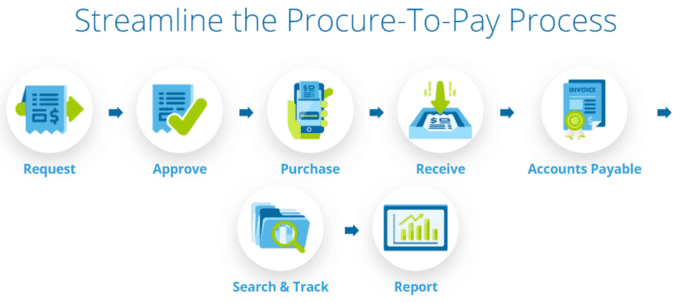It's now more important than ever to establish and maintain a good work environment, and transparency is a key component of that.
Today, there is an information overload and everyone is well-informed. So most people prefer to work with companies that are known for their good work environments. It is easy to check the reviews and ratings of any company, so businesses can’t afford any negative publicity. It's now more important than ever to establish and maintain a good work environment, and transparency is a key component of that.
Maintaining transparency sounds great in theory, but is not that easy to implement practically. It takes a lot of time and effort to create a truly transparent company and work environment.
Download our Business Resource – Marketing operations strategy guide
The guide is designed to give an overview of marketing operations and covers the 7 pillars of a marketing operations framework, as well as some advice for adoption and long-term compliance.
Access the Marketing operations strategy guide
Here are some best practices and tips to maintain transparency at your company, at different levels.
Company-level
If you want transparency in your business, you need to start at the organizational level and ensure that it trickles down to the floor level.
Here are two effective ways in which you can maintain transparency at the company level.
Establish your core values
Establishing core values like honesty, openness and fairness is the cornerstone for building a transparent organization. Not only do you need to establish these as your core values, but also ensure that your employees personify these values and lead by example.
For example, the social media scheduling company, Buffer, has “Default to transparency” as its core value. To maintain this in practice, the company maintains a publicly-available spreadsheet disclosing each employee’s salary, regardless of their position at the company. It has a set formula for calculating salaries and is fair and honest about it. This is the epitome of transparency and fairness within an organization.
Set up open communication channels
Another brilliant way to maintain transparency at an organizational level is to have open communication channels. For example, this can be a portal where the latest company news and events are shared.
You could use group chat tools like Microsoft Teams to maintain an open communication channel for team members. In addition to group chats, you can also use this tool to share files, manage workflows and schedule tasks. It even has a discussion board where team members can contribute their ideas or opinions about a certain topic.

Image via Microsoft
You could even have a forum where employees at all levels can ask questions of senior management. On top of this, an informal community-style portal where employees at all levels can connect and have discussions about topics of common interest could be highly beneficial.
Employee level
At an employee level, the first step in creating a transparent work environment is to encourage them to follow the company’s core values. You can also create an open floor plan to foster open communication.
Open floor plan
Seating employees in cubicles may make them feel cut off from others and can hinder open communication. So, having an open floor plan with very few barricades can help enable an open flow of communication among employees. The easier it is for people to communicate, the higher the likelihood of them asking questions and having discussions instead of working in silos.
This increase in communication can also help reduce solo working, bring different teams together on projects - such as sales and marketing - and encourage collaboration. All of this can benefit projects and campaigns.
Managerial level
This is probably the most important of all because managers are the ones who act as middlemen between top management and floor-level employees. The core burden of maintaining transparency falls on their shoulders.
Open-door policy
The one thing that almost all transparent organizations have is an open-door policy. Employees should be empowered and encouraged to go and talk to any manager. This provides them with a platform to ask questions and discuss concerns. All of this helps to maintain a positive work environment.
Regular meetings on company/team performance
Another responsibility that managers should bear is to convey the state of company affairs to the employees. This shows that both good and bad news is shared with everyone and that the company considers each employee as an integral part of the system.
The same is true for team performance as well. All managers have insights into the overall team performance for any given period of time. Having monthly or quarterly team performance review meeting helps get everyone on the same page.
The team meetings do not just need to be about performance, though. You can simply have meetings to discuss the various projects that the team is working on. If anyone needs ideas or help with something, they can ask for it. Team meetings can also be used to appreciate people or to announce important news, upcoming projects, events, etc.
Clear and honest communication
Managers should set clear expectations and provide fair feedback on whether those expectations are met or not. If managers don’t do that, and an employee does not get an expected raise or promotion, they might feel resentful.
However, if there’s an open discussion about employee performance and opportunities for improvement, then both will be on the same page.
Customer/supplier level
Maintaining transparency only within the organization is not enough to build a transparent organization. You need to be transparent with your suppliers and customers as well to build good relationships with them.
Have digital systems that suppliers can also access
The first requirement for maintaining transparency among all stakeholders is to have digital systems instead of manual ones so that everyone can access information in real-time. Digitizing your operational processes and systems and giving access to everyone involved is a big step towards maintaining transparency.
For example, let’s say that you have a manufacturing firm where you have multiple suppliers and you often pay your dues later, so you have lots of account payables. Now, if you use a supplier management solution, such as the one provided by PurchaseControl, you can provide everyone with real-time visibility of the process. Both your employees and your suppliers can see exactly what was ordered, how much was paid, how much still remains as accounts payables, etc.

Image via: PurchaseControl
If you do this manually, people will still get the information but it won’t be easily accessible and definitely not available in real-time. Digitizing such processes instils confidence in your suppliers so they won’t hesitate in letting you keep accounts payables.
This is just one of the many examples of how digital transformation can bring more transparency between you and your suppliers.
Regular and honest two-way communication
To maintain transparency with your clients, you need to have regular, two-way communication at each stage. From requirement gathering to discussions about the scope of work to project updates, everything should be communicated openly and honestly. This not only keeps everyone on the same page but also improves project management.
Sending a thorough scope of work document and regular project updates are two best practices that help maintain transparency at the client level.
Conclusion
Transparency is an essential characteristic of any good organization and helps maintain a good work environment and brand image.
Follow these best practices to build a transparent organization and maintain transparency at all levels.
Shane Barker is a digital marketing consultant who specializes in influencer marketing, content marketing, and SEO. He is the co-founder of
Attrock, a digital marketing agency. He has consulted with Fortune 500 companies, influencers with digital products, and a number of A-List celebrities.









